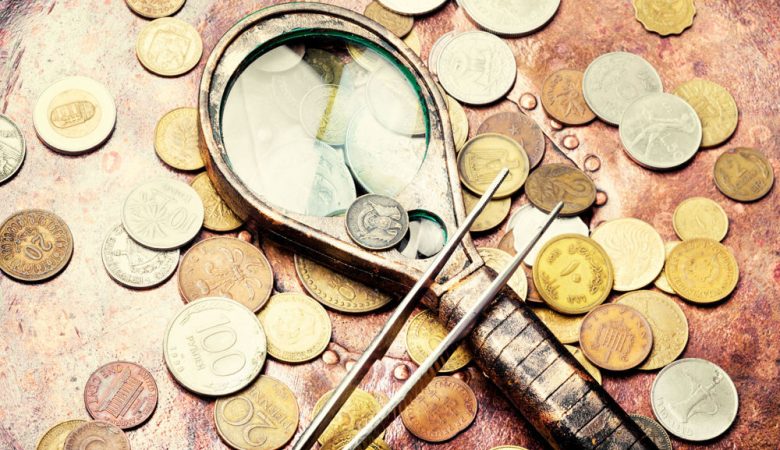Why collect ancient coins?
For many reasons, collecting antique coins can be an exciting and fulfilling pastime. The following are some reasons and advantages for collecting ancient coins:
Historical and Cultural Interest: Historic coins are observable remnants of the past. They offer a link to historical cultures, civilizations, and events. The historical and cultural value of these relics typically attracts collectors.
Educational Value: Learning about various historical eras, geographical locations, and the artwork and symbolism of past civilizations may all be accomplished via the collecting of ancient coins. It can increase one’s knowledge in a variety of subjects and promote research.
Aesthetic Appeal: Ancient coins have complex designs and sometimes have stunning beauty. They frequently include elaborate designs, inscriptions, and symbols that are beautiful to look at.
Investment Potential: Antiquated coin collectors may consider them investments. Some rare or historically significant ancient coins can increase in value over time, even though not all of them do. It’s crucial to remember that curiosity and enthusiasm, not money, should be the main driving forces behind ancient coin collecting.
Preservation of History: Many collectors see themselves as historical guardians. They may contribute to the preservation of these relics for future generations by obtaining and safeguarding historic coins.
Connection to the Past: Possessing a coin that was struck hundreds or even thousands of years ago might foster a special bond with the historical users. It provides a sense of a physical connection to the past.
Rarity and Uniqueness: Because they are so uncommon and distinctive, certain ancient coins are highly prized by collectors. For collectors, possessing a rare coin may be an accomplishment.
Personal Enjoyment: Ancient coin collecting may be a very fulfilling and intimate hobby. The excitement of finding something new, the difficulty of obtaining new items, and the delight of learning about and understanding history all add to the enjoyment of collecting.
Cultural and Numismatic Exploration: Collectors can investigate the numismatic features of historical coins, including researching minting methods, interpreting inscriptions, and learning about the financial and economic histories of various societies.
Social and Community Engagement: Coin gathering is sometimes a social pastime. It offers chances to interact in person or virtually through online groups and events with dealers, other collectors, and industry professionals.
It’s crucial to approach the gathering of ancient coins with some understanding and prudence. Since there are many fakes on the ancient coin market, authenticity is a major problem. As a result, before making any purchases, collectors should take the time to become knowledgeable about the hobby, develop their skills, and carefully check the authenticity of the coins.

What is the detail of ancient coin?
Depending on the era, society, and particular coin in issue, the features of an antique coin might differ greatly. Nonetheless, the following characteristics and information are typical of ancient coins:
- Obverse (Front) Side:
- Portrait: On the obverse side of a lot of ancient coins is a picture of a king, monarch, or divinity. Significant historical and creative insights may be gained from this image.
Inscriptions: Names, titles, and other pertinent information about the monarch are frequently inscribed on the obverse of coins.
emblems and Decorations: The reverse side of the coin may include a variety of emblems, artistic themes, and ornamental features.
- Portrait: On the obverse side of a lot of ancient coins is a picture of a king, monarch, or divinity. Significant historical and creative insights may be gained from this image.
- Reverse (Back) Side:
- Pictures and Symbols: A variety of pictures, symbols, and scenes may be seen on the back. These might stand for myths, animals, gods, or other aspects of culture and history.
Similar to the obverse, the reverse of the coin may include inscriptions that indicate the denomination, the issuing body, or other details.
Mint Marks: The mint mark on some antique coins identifies the place of strimming.
- Pictures and Symbols: A variety of pictures, symbols, and scenes may be seen on the back. These might stand for myths, animals, gods, or other aspects of culture and history.
- Material and Size:
- Copper, silver, gold, and bronze were among the materials used to make ancient coins. The coin’s denomination was frequently indicated by its weight and size.
- Condition:
- Ancient coin collectors employ grading systems to evaluate coins of varying conditions. Coins can be extremely worn or corroded, or they might be in excellent condition and mint state (uncirculated).
- Edge:
- The coin’s edge might be plain, reeded (with ridges), or ornamented, among other variations. These might offer more details on the denomination or country of origin of the coin.
- Date and Era:
- A date or an indication of the era can be found on certain old coins. Others gauge their age by looking at inscriptions and historical background.
- Country of Origin:
- Ancient coins originate from many different areas and civilizations. Inscriptions, symbols, and design features are frequently used to identify the nation or culture of origin.
- Artistic Style:
- The artistic style of the era and location in which ancient coins were struck is frequently evident on them. This can contain stylized or realistic portrayals of humans, animals, and gods.


The features and qualities of ancient coins can differ greatly, and numismatics—the collecting and study of coins—is a complicated discipline requiring knowledge to fully understand and appreciate the historical and cultural background of each piece. Ancient coins can also vary widely in terms of preservation and quality, which affects how valuable they are as collectibles.




